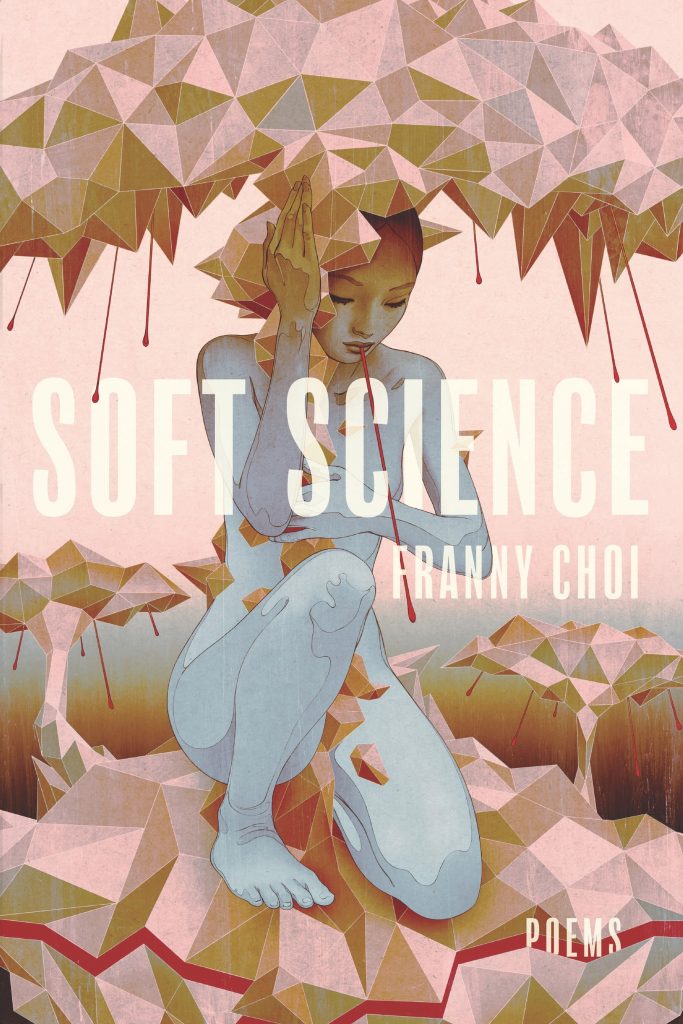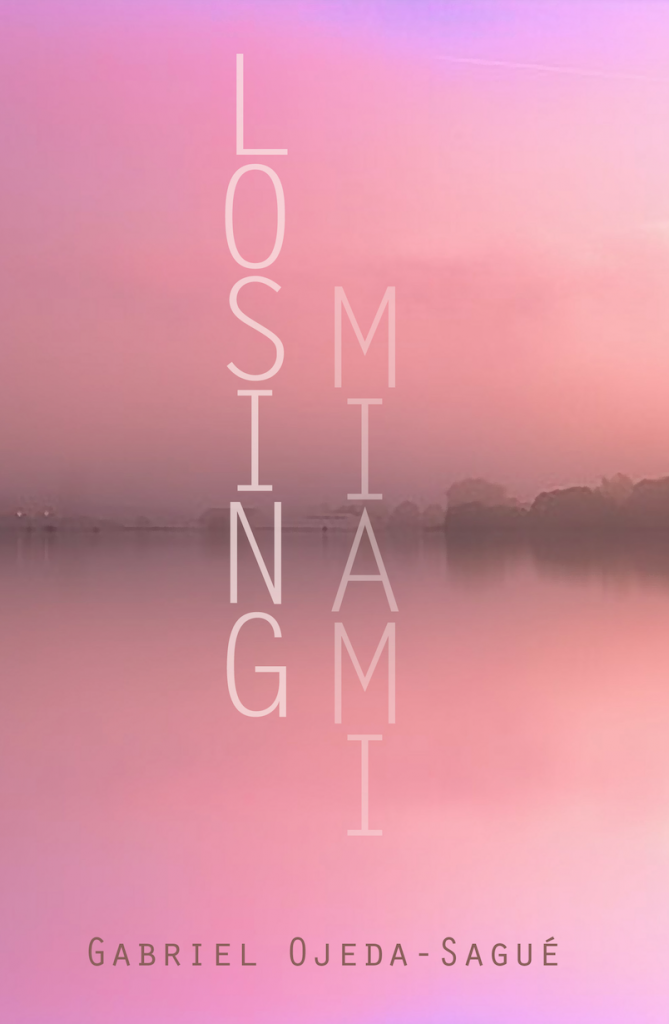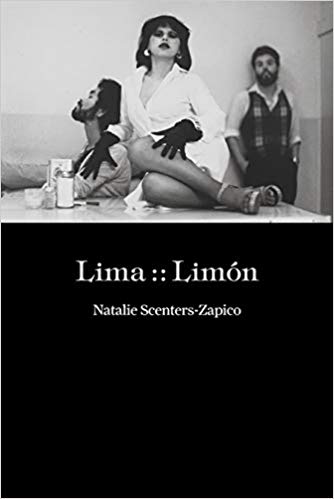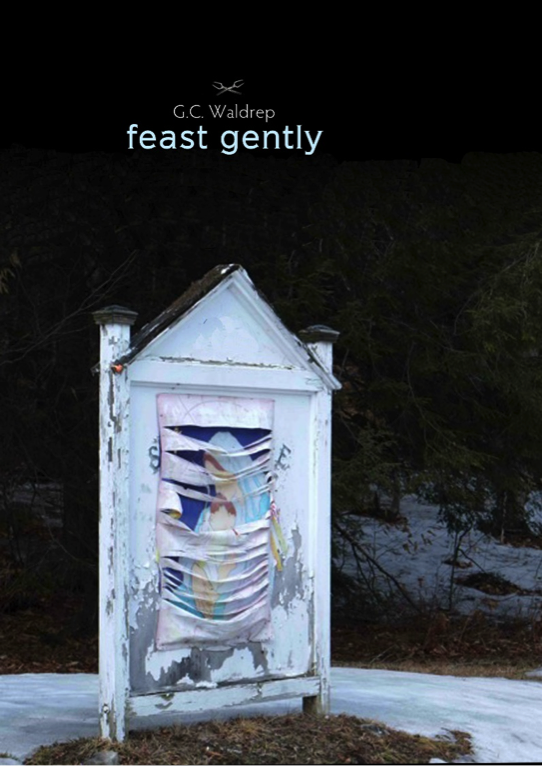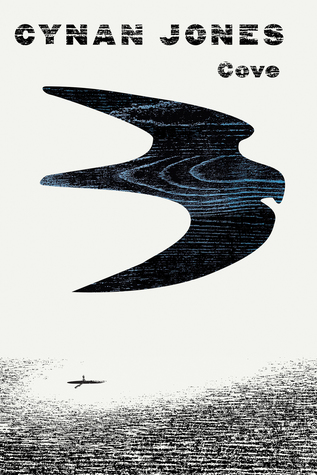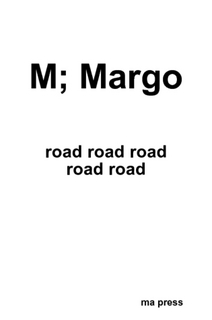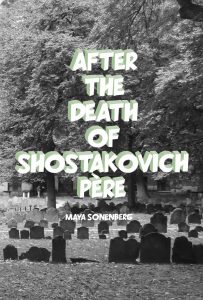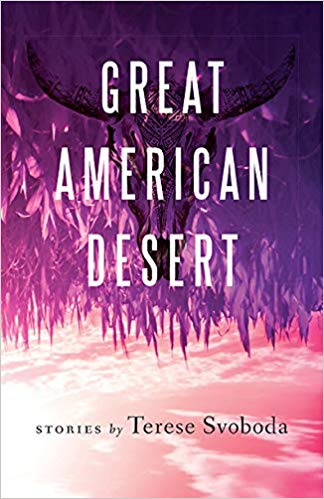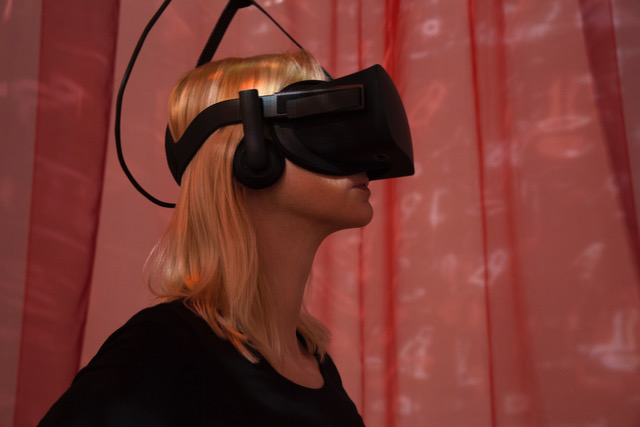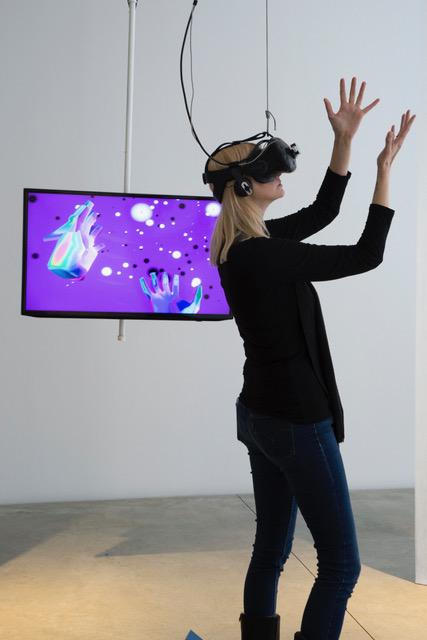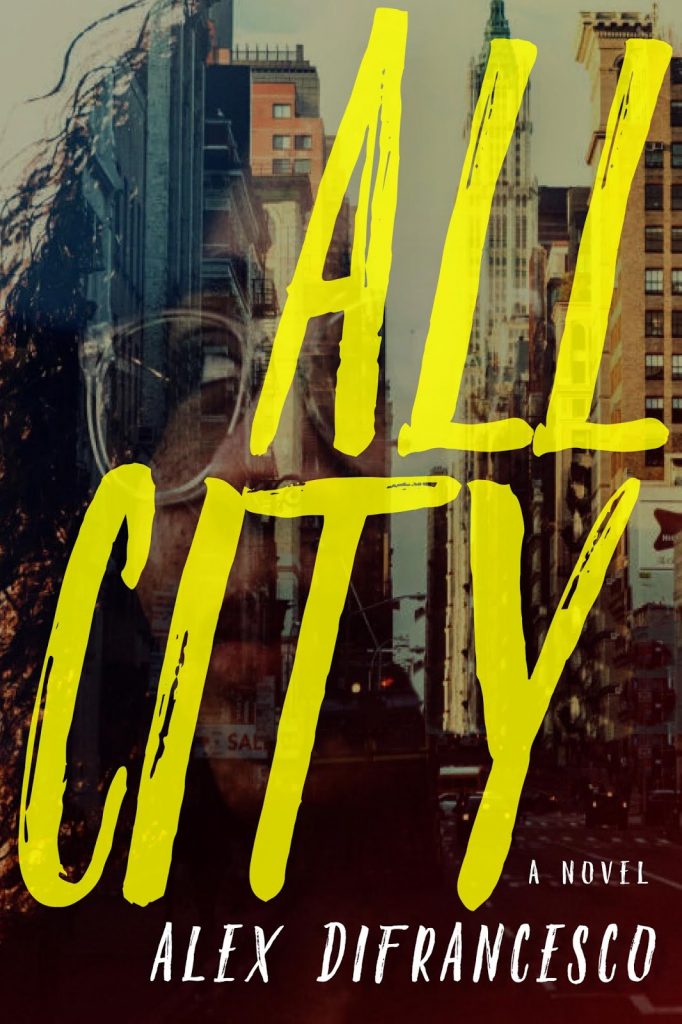
(Seven Stories Press, 2019)
INTERVIEW BY JESSICA MANNION
—
Alex DiFrancesco has had a busy year. Their essay collection Psychopomps was released by Civil Coping Mechanisms in February, and their novel All City is being released by Seven Stories Press on June 18. While both books are excellent, this interview focuses on All City. It is an important book, and very possibly a prophetic one. All City speaks for the people whose stories do not often get told, much less told with nuance and compassion.
All City takes place in a New York City of the near future. The chasm between the haves and have-nots is wider than ever, and climate change has sent superstorms of increasing violence to the shores of the city, tearing it down with wind and water. Those with the means always leave before the storms hit, but those without resources and means, those who have nowhere else to go, must remain and hold on to what they can by sheer force of will.
The book primarily follows three people, their struggles to survive, to regroup and find security after Superstorm Bernice, and to build new lives in a world that’s a mere muddy remnant of what they knew before. Even after the waters recede, life doesn’t get any easier; there is no new food being shipped in, medical care is practically nonexistent, roads and bridges are destroyed, and the wreckage of the storm is everywhere, bringing with it vermin and sickness. As resources diminish, violence increases, and there are few places where one can feel safe.
Alex lived in New York for about 15 years, but has since moved to Cleveland, Ohio, where they are an MFA candidate at Cleveland State University.
Jessica Mannion: Having just read All City for the second time, I loved it even more. There’s a lot to unpack. In part, I see it as a kind of hybrid love letter to and eulogy for New York City. Can you talk about the changes you saw during your time living in NYC and how living here influenced your writing, and your life as an artist?
Alex DiFrancesco: So now, when I think back to when I moved to New York in 2000, I realize I was a shock-wave gentrifier in Bushwick. I was a white, queer, artist who was specifically moved into a very affordable space at the time by people looking to develop it. I didn’t understand that at the time! I was just out of a small town in Pennsylvania, and thrilled that I could work part time as a lunch server in a little Middle Eastern place, write most of the day, and still pay my rent and have money to party a little. It was the dream, for me, to move to NYC and become an artist. I lived in a dirty loft and had a desk made out of a couple boxes and an old door, and I wrote every day. I was highly suspect about going back to school, and NYC provided so many ways other than that route to become a writer.
I remember in around 2005, I was working at some film-release party on a boat moored in the Hudson (those were the days when Craigslist still had the best odd jobs), and someone way slicker and cooler than me asked me where I lived, and then proclaimed Bushwick as “up-and-coming.” I had this sudden, distinct understanding that I would no longer be able live there, and that I had been the beginning of that process for people who had been there much longer.
I lived in NYC for around 10 more years after that. First I had to move all the way to the end of Brooklyn. Then I moved to Queens. Then, finally, just before I left, a friend was letting me pay way less than she could have charged for a room in the apartment she owned because there was no way I could live there and afford it anymore. What I made had stayed the same, and my rent had tripled.
But ultimately, living and scraping by in New York made me the artist I am today. I went to school at the New School, and learned from some amazing professors. I joined a writers’ group with some of the most talented writers I’ve ever worked with in it. I went to lectures, worked in bookstores, interned in publishing. It’s helped me build my life around the written word in so many ways. I’m sad every day that there’s just no place for me there anymore.
JM: What does All City mean and where did the idea for the book come from?
AD: The term “all city” is old graffiti slang for an artist who has painted in all 5 boroughs of New York. When I wrote the anonymous artist character into the book, I thought about how nearly impossible this would be to accomplish if you were working in the post-collapse conditions of the book. I decided to make him do it anyway.
The book was a mash-up of what ifs, really. I started writing a list of them after Superstorm Sandy destroyed parts of New York City, and also shortly after Bansky did his month-long NYC residency where he guerilla-installed a new project in an undisclosed location every day for an entire month. I’d also been reading a lot about Hurricane Katrina. The ideas just sort of melded together.
JM: The novel is primarily told through 3 characters: Makayla, Jesse and Evann. There’s so much going on with the characters: they are all affected by this Superstorm Bernice, and they all experience displacement and a certain degree of trauma, but because of their social status and circumstances, each experiences / survives / processes that trauma differently. Why did you choose these characters to tell this story?
The first draft of this novel was a super sloppy 40,000 words written during NaNoWriMo. I didn’t really participate in the community aspects of it, but I did challenge myself to write the proposed amount in the month of November. Once I had the list of what-ifs, I started to look at them from different angles. Makayla came first, because I wanted someone who would likely be without many resources besides her sense of community and her relationships. I added Jesse in because it’s very important to me to portray trans lives in the larger context of the world — in such a way that they’re not isolated, but also not in trans-only spaces all the time. Evann felt necessary, too, because you can’t show the have-nots without showing what it looks like to have it all.
JM: Another character – a mysterious mural artist – remains unseen, but his Art starts showing up everywhere in the devastated city like crocuses in the spring. What role does Art play in All City? How have the visual arts influenced or inspired you as a writer and artist?
AD: There are a series of works of visual art in this novel that are all carefully chosen and all mean different things.
Evann, the art collector, is given a Basquiat when she graduates from design school. This kind of started as a joke, because I made her collect Basquiats and first editions of Ayn Rand books. What kind of awful person wouldn’t get the irony there? Then, like a lot of the things I do to amuse myself in my writing, I started taking it seriously. Really, what kind of person wouldn’t get that? Certainly not one like me, or anyone I’d care about. But someone. So Evann was born out of love for Basquiat and Ayn Rand.
There’s a scene where two trans street punks go into The Met to look at Van Gogh paintings, and one of them starts crying because they’ve never seen Van Gogh’s sunflowers and never realized how dead they were. The other one says, no, they’re dead but they’re still moving and full of life, that’s how much life Van Gogh saw even though he was so sad. It’s one of the few times in the book that art is just enjoyed and not commodified.
Then, Evann owns two more paintings that play symbolic roles in the story. She owns Richard Bosman’s woodcut “Full Moon” and John Lurie’s absurdist watercolor “Bear Surprise.” The role of “Full Moon” (which shows one man beating another to death in a boat) is to show Evann looking into a world she has no idea about, but the other characters are all to familiar with. The role of “Bear Surprise” (which shows two people having sex in the woods and a bear yelling “Surprise!”) is because it’s Lurie’s most famous but probably least-skilled painting, which Evann totally doesn’t understand. It’s a little poking fun at her, to have it in there. I also learned while doing research for the novel that Lurie was one of Basquiat’s early mentors, so I felt compelled to write him in because of that connection.
Art is really commodified almost every time it appears in the book. It’s made for the right reasons, but it’s consumed, often, in ways that are more about the owning it than the divineness of it. I have very silly and almost spiritual beliefs about art and where it comes from, but the art world and the world of the novel are both kind of ugly and gross and highly capitalist rather than about communicating the thing that makes art worth making.
JM: How does All City explore ideas of ownership?
AD: I’m thinking of the ownership of space as the main way it works. There’s a luxury condo, and when it’s not something that the rich want, it’s good enough for the poor. It’s a place they can make a utopia. But then it becomes something that the rich want again, and it’s too good for the people who have made it their own. This is a microcosm of the gentrification of New York, in the book. So really the way ownership is dictated is on the desires of those who have the money to protect their “rights” to a space, not those who work to make it their own.
There’s also something there about the use of graffiti as a way to take and remake public spaces as something belonging to everyone, for everyone’s use and enjoyment. It’s ecstatic and community-based, much like the true community-building that happens in the luxury condo. I don’t think I could’ve told this story without the addition of graffiti.
JM: How does All City explore the concept of hope – about the future, about a better life, about belonging – and who ultimately will see their hopes realized?
AD: Hope is fraught in All City. There are people like Evann who have implicit access to it, when they choose it. There are people like Makayla who make it out of what they have. But I want to say that the last scene is my probably depressive final take. Who gets to see that which is supposed to bring us hope? Who doesn’t? And who are the few people who believe that hope is a starting point, something they saw once, and carry that fire as far as they can?
JM: In part, All City is a story of survival. How do you explore survival and the things some people must endure in order to do so?
AD: Without giving too much away, I think the biggest traumas in the book are one character’s rape, one’s loss of a parent, and one experiencing a hate crime committed against the person they love. These characters all rally, at least for a while, or eventually, to use the trauma they’ve experienced to make the world around them better. It creates empathy in them rather than destroying them — but sometimes it destroys them too. I think the idea that some people choose to make sure that no one goes through the horrible things they’ve been through is the driving idea behind a lot of these characters. They’re not saints, and they’re not perfect — but they’re driven by the fact that traumatic things have happened and they’ve turned them into compassion, which then turns into community and survival.
JM: The characters Makayla and Jesse in other circumstances would often be seen as outsiders of society, but you put them front and center in the book. Why did you choose to tell this story from their perspective?
AD: This is always my goal, to put the outsiders at the inside. I think I have always felt like a bit of an outsider myself, so I’m not really sure how I could sustain an emotional and moral core to a novel without it being heavily focused on characters who see and feel and experience things outside the norm or the default.
Also, it’s a highly political act to write the stories that people say shouldn’t be told. I knew Jesse had to be in there because I’m a trans person, and queer representation means something to me. I was really a bit hesitant to write Makayla because she’s a minority I’m not a part of, she’s a woman of color. Certainly, a woman of color could have written Makayla in another way, and it would be entirely more appropriate for her to tell a woman of color’s story. But I also had been reading so much about the aftermath of Katrina, and the poor people left behind, and it struck me as absurd to try to tell a story of gentrification and climate change and survival from multiple perspectives without characters of color. I took as much feedback as I could get from folks more aligned with her perspective.
But it was incredibly important to me, outside of specific demographic, to tell the story of those who had been left behind, and, more terrifyingly are being left behind. All City is, in some ways, a warning. But it’s also the story of those who’ve been pushed so far out that they’ve had to make their own way, and know what they’re doing when things really go down.
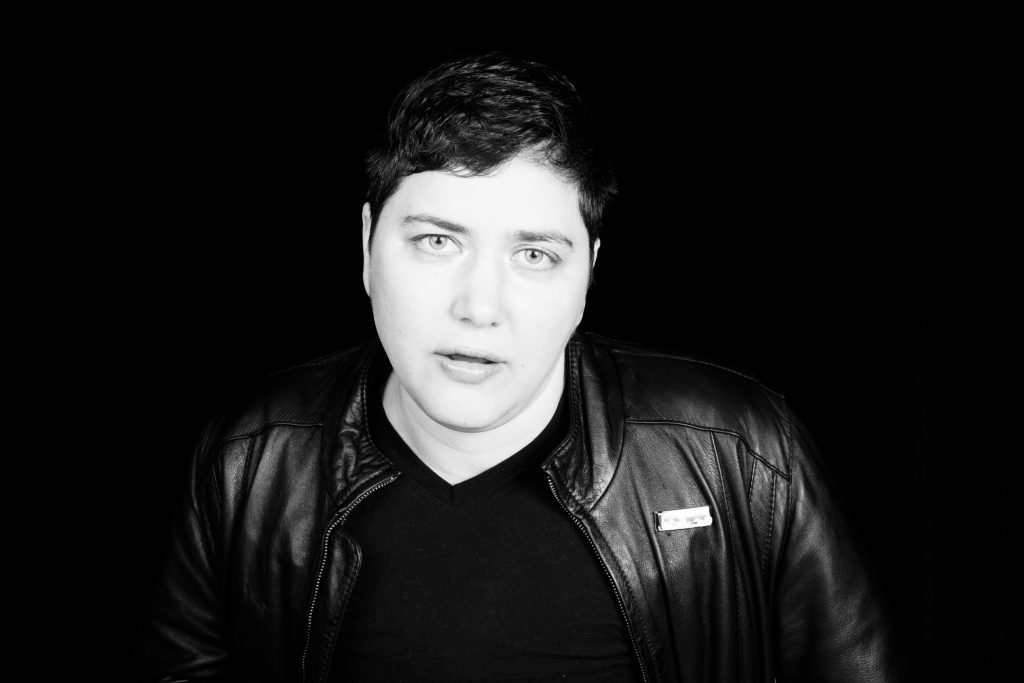
(photo by Emily Raw)
JM: In many ways, Evann is a controversial character; she is probably the least sympathetic and the one who causes the most harm. Yet she would certainly not view herself that way, nor would much of society. How is her perspective important?
AD: I wrote Evann about 16 times. You might recall from when we workshopped this book in our writers’ group, people were referring to her in Snidely Whiplash terms, because she was just that bad. The somewhat less dastardly Evann who ended up in the final pages was born largely out of my wonderful editor, Sanina Clark, pushing me to make her less villainous. Sanina had asked me early on if Evann was a cipher, a stand-in for gentrification, and I said that no, she was a villain, for sure, but I also wanted her emptiness and need for consumption in place of being able to feel anything to be real and human. Sanina pushed me through rewrites to make Evann less of a complete monster, and more of a asshole human, if that makes sense.
In some ways, Evann is the most important character I’ve written thus far (at least to me), because she’s the life most outside of my own, which is what writers are supposed to be creating, I think. With every other character I was able to find something inside myself to return to like a compass when I started to go astray with them. I really had to work to find this place with Evann. I used to take walks in Green-Wood Cemetery to Basquiat’s grave all the time, talking to his ghost and think about Evann doing the same.
But she also plays an important role in the story in that we have to see the other side of this huge divide in the future world. If we see Jesse nodding out in a dirty IRT station from scrounged opiates, we also have to see Evann fucking a guy with pearl studs in his dick, you know?
JM: Your essay collection Psychopomps came out in February of this year. How do these books inform each other?
AD: I think people who read both will see bits and pieces that reflect each other. Sometimes I kind of feel like writing creative nonfiction can be like pulling back the curtain and seeing the little dorky man in a suit working the controllers. That’s me, the little dorky guy in Psychopomps, and All City is like the illusionary Oz.
I’m only half-way kidding. Anyway, read both; keep my cat in her favorite wet food.
—
Jessica Mannion is a Brooklyn-based freelance writer. Her writing can be seen in The Literary Review, Alliteratti, and other publications. She also does copy-writing on a variety of subjects.
![[PANK]](https://pankmagazine.com/wp-content/themes/pank/assets/images/pank-logo-large.png)

